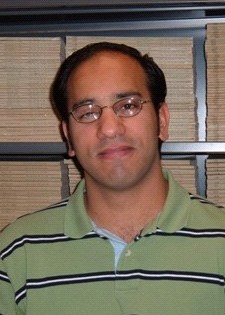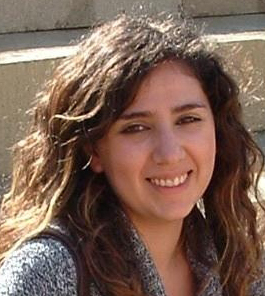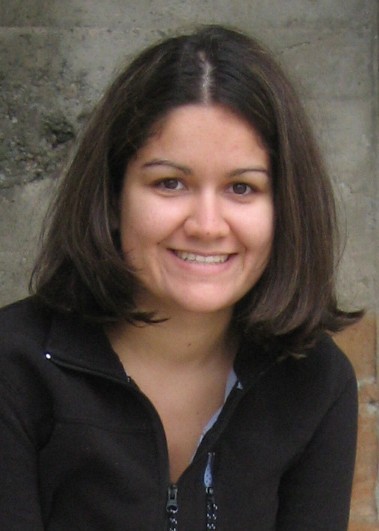Org. Synth. 2007, 84, 192
DOI: 10.15227/orgsyn.084.0192
COPPER(I) IODIDE DIMETHYL SULFIDE CATALYZED ADDITION OF A VINYLZIRCONIUM REAGENT
[PREPARATION OF 4-PHENYL-5(E)-DECEN-2-ONE]
Submitted by Amer El-Batta and Mikael Bergdahl
1.
Checked by Monica Trincado, Yazmin Rosa-Bauza, and Jonathan A. Ellman.
1. Procedure
An oven-dried 250-mL, two-necked, round-bottomed flask equipped with a magnetic stirring bar, rubber septum and a water condenser provided with an argon atmosphere inlet, is charged with Schwartz's reagent (9.36 g, 36.3 mmol) (Note 1) by temporarily removing the septum. The flask is immersed in an ice/water cooling bath equipped with an external thermometer (Note 2), and placed on a magnetic stir plate. Under an atmosphere of argon, 25.0 mL of tetrahydrofuran (Note 3) and 1-hexyne (3.71 mL, 33.0 mmol) (Note 4) are added to the flask by syringe through the septum. After stirring for 5 min, the ice/water cooling bath is replaced by an oil bath equipped with an external thermometer. Stirring is maintained and the reaction flask is heated to 40 °C for 6 h. The resulting yellow solution is cooled to room temperature (Note 5), trans–4-phenyl-3-buten-2-one (4.82 g, 33.0 mmol) is added (Note 6) and 5 min later copper(I) iodide-dimethyl sulfide complex (782 mg, 3.30 mmol) (Note 7) is added by temporarily removing the septum. The reaction temperature is increased to 40 °C, and the stirring is continued under an argon atmosphere for 12 h. The heating is interrupted and the oil bath is replaced by an ice/water bath. After removing the argon inlet and the water condenser, the reaction mixture is quenched with ether saturated with water (50 mL) at the ice/water bath temperature. The resulting heterogeneous mixture is stirred for 10 min and filtered in vacuo through a Celite® pad (Note 8) in a Büchner funnel. The Celite is carefully washed with 3 × 100 mL portions of ether, and the resulting ethereal phase is transferred to a 500-mL separatory funnel. The organic layer is washed with 2 × 20 mL of saturated sodium bicarbonate solution, dried over sodium sulfate (Note 9), filtered through a second Celite pad in a Büchner funnel, and concentrated under reduced pressure. The resulting crude product is purified on a silica gel 60Å chromatography column (38 cm × 4 cm) (Note 10) using a hexanes-ethyl acetate 1:0–10:1 gradient (Note 11) (Note 12). Removal of the eluent in vacuo afforded 5.55 g (24.1 mmol, 73%) of 4-phenyl-5(E)-decen-2-one as a light yellow oil (Note 13).
2. Notes
1.
The submitters prepared bis(cyclopentadienyl)zirconium chloride hydride by lithium aluminum hydride reduction of bis(cyclopentadienyl)zirconium dichloride employing the procedure of Buchwald and his coworkers.
2 The checkers purchased Schwartz's reagent from Strem Chemicals, Inc. (Cat. No. 40-1040), and it was used as received.
2.
The reaction has not been conducted on a larger scale than 36.3 mmol. As the reaction was mildly exothermic,
3 use of an ice/water bath is recommended on a larger scale.
3.
Tetrahydrofuran was freshly distilled from sodium/benzophenone under an argon atmosphere (submitters) or dried through an alumina column (checkers).
4.
1-Hexyne was purchased from Aldrich Chemical Company, Inc. (Cat. No. 24,442-2) and was used as received. The alkyne was slowly added (~1 mL/min) using a gas tight syringe.
5.
The flask was placed in a water bath and the mixture was stirred for 10 min.
6.
Benzalacetone was purchased from Aldrich Chemical Company, Inc. (Cat. No. 24,109-1) and was used as received.
7.
Copper(I) iodide (submitters used 98%, checkers used 99.999%), commercially available from Aldrich Chemical Company, Inc., was purified via its dimethyl sulfide complex following the House protocol.
4 Copper(I) iodide (5.0 g, 26 mmol) in
15 mL of anhydrous ether (ACS grade) was mixed with
20 mL (380 mmol) of dimethyl sulfide (Aldrich Chemical Company, Inc., Cat. No. 47,157–7). The resulting yellow solution was filtered through a cotton plug to remove heterogeneous material. The filtrate was diluted with
50 mL of cold hexanes. The crystalline material obtained was filtered with suction and washed with cold
hexanes (3 × 50 mL) to afford 5.1 g of the copper complex as white prisms. The CuI/DMS complex was subsequently dried under vacuum (ca. 0.1 mbar) at room temperature where it rapidly lost DMS and reached a constant weight within two hours to afford 4.5 of white crystals. Elemental analysis of this material indicated a stoichiometry of CuI/0.75 DMS. Anal. Calcd. for C
6H
18Cu
4I
4S
3: C, 7.60; H, 1.91; S, 10.15. Found: C, 7.53; H, 1.72; S, 10.13.
8.
Celite 545® was purchased from Fisher Scientific Co. (Cat. No. C212-500).
9.
Sodium sulfate was purchased from EMD Chemicals, Inc. (Cat. No. SX0763-3).
10.
Silica gel was purchased from Whatman (Cat. No. 4745-250), 230–400 Mesh.
11.
Ethyl acetate and hexanes were purchased from Fisher Scientific, ACS reagent grade. The submitters applied flash-chromatography conditions with 10% ethyl acetate in hexanes.
12.
The product had a TLC R
f value of 0.47 [ethyl acetate : hexanes, 1:10].
13.
The submitters' reported a yield of 6.23 g (82%). Full characterization of the product was as follows:
1H NMR
pdf (400 MHz, CDCl
3) δ: 0.86 (t,
J = 6.8 Hz, 3 H), 1.26–1.42 (m, 4 H), 2.03–2.09 (m, 2 H), 2.09 (s, 3 H), 2.85 (dd,
J = 7.6, 7.2 Hz, 2 H), 3.91 (q,
J = 7.2 Hz, 1 H), 5.53 (dtd,
J = 15.2, 7.2, 0.8 Hz, 1 H), 5.62 (ddt,
J = 15.2, 7.2, 1.2 Hz, 1 H), 7.20–7.35 (m, 5 H);
13C NMR
pdf (100 MHz, CDCl
3) δ: 13.9 (CH
3), 22.3 (CH
2), 30.6 (CH
3), 31.6 (CH
2), 32.3 (CH
2), 44.0 (CH), 49.8 (CH
2), 126.4 (CH), 127.5 (2xCH), 128.6 (2xCH), 130.9 (CH), 132.3 (CH), 143.8 (C), 207.0 (CO); IR (thin film) cm
−1: 1716, 1602, 1494, 1453, 968, 699; HRMS (EI)
m/z Calcd for C
16H
22O: 230.1671. Found: 230.1671. The purity of the product was determined to be >98% by
1H NMR and elemental analysis. Anal. Calcd. for C
16H
22O: C, 83.43; H, 9.63. Found: C, 83.46; H, 9.72.
Handling and Disposal of Hazardous Chemicals
The procedures in this article are intended for use only by persons with prior training in experimental organic chemistry. All hazardous materials should be handled using the standard procedures for work with chemicals described in references such as "Prudent Practices in the Laboratory" (The National Academies Press, Washington, D.C., 2011 www.nap.edu). All chemical waste should be disposed of in accordance with local regulations. For general guidelines for the management of chemical waste, see Chapter 8 of Prudent Practices.
These procedures must be conducted at one's own risk. Organic Syntheses, Inc., its Editors, and its Board of Directors do not warrant or guarantee the safety of individuals using these procedures and hereby disclaim any liability for any injuries or damages claimed to have resulted from or related in any way to the procedures herein.
3. Discussion
The CuI•0.75DMS complex is an excellent catalyst for the direct conjugate addition of alkenyl groups from vinylzirconocene reagents to α,β-unsaturated aldehydes and ketones.
5 The presence of the catalyst with an alkenylzirconocene, at 40 °C in THF, circumvents the need for making discrete alkenylcopper reagents. The catalyst is superior in terms of product yields and alkene flexibility in comparison to other copper(I) sources as well as the nickel(II)
6 catalyzed conjugate addition. This simple one-pot procedure shows that one equivalent of the vinylzirconocene relative to the enone is needed to afford a high yield of the 1,4-addition of the alkenyl group. Some representative examples of the present reaction are shown in Table 1.
Copper(I) catalyzed conjugate additions of vinylzirconocenes, using the rather unappreciated CuI•DMS complex, circumvent problems associated with the formation of dienes. Our preliminary studies show that the dimerization of the alkenyl groups is minimal as long as freshly prepared (CuI)
4(Me
2S)
3 complex
7,8 is employed. A vinylzirconocene reagent, in the presence of (CuI)
4(Me
2S)
3, is an extremely mild and considerably less basic system than the lithium alkenyl compounds or the corresponding discrete vinylcuprate reagents commonly used in 1,4-addition reactions.
Table 1. Conjugate additions of vinyl groups.
Appendix
Chemical Abstracts Nomenclature (Collective Index Number);
(Registry Number)
Schwartz's reagent:
Zirconium, chlorobis(η5-2,4-cyclopentadien-1-yl)hydro- (9); (37342-97-5)
Sodium benzophenone ketyl:
Benzophenone, radical ion (1-), sodium (8); Methane, diphenyl-, radical ion (1-), sodium (9); (3463-17-0)
1-Hexyne (8, 9); (693-02-7)
Benzalacetone:
3-buten-2-one, 4-phenyl- (8, 9); (122-57-6)
Copper(I) iodide (8, 9); (7681-65-4)
Dimethyl sulfide:
Methyl sulfide (8); Methane, thiobis- (9); (75-18-3)
 |
Mikael Bergdahl received his undergraduate and Ph.D. education at Chalmers University of Technology, Sweden, where he conducted research in the area of organocopper chemistry under the direction of Professor Martin Nilsson". After postdoctoral work at Notre Dame (Prof. Helquist) and The Scripps Research Institute and University of California, San Diego (Prof. K.C. Nicolaou), he is now conducting research in the area of new chemical methodology and the application toward the synthesis of complex natural products. His current research focuses on the invention and design of catalytic processes, total synthesis and “greener chemistry.”
|
 |
Amer El-Batta received his B.Sc. degree in pharmacy from Applied Science University in Jordan. He then moved to the United States to pursue his graduate studies, where he is currently a Ph.D. candidate in the Joint Doctoral Program of University of California, San Diego and San Diego State University. Under the direction of Prof. Mikael Bergdahl, his graduate research has focused on the copper(I)-catalyzed conjugate addition of alkenylzirconocene and alkenylzincate reagents to various α,β-unsaturated carbonyl substrates. Amer has also been working on chemical studies toward the total synthesis of Azaspirene, a novel angiogenesis inhibitor.
|
 |
Mónica Trincado was born in 1976 in León, Spain. After undergraduate studies at the Universidad de Oviedo, she joined the group of Prof. José Barluenga in 1999. She obtained her Ph.D. in 2005 on selective iodonium-promoted carbo- and heterocyclization processes. Since November 2005, she has been a postdoctoral scholar (MEC fellow) in the group of Prof. Jonathan Ellman at the University of California, Berkeley on new organocatalytic enantioselective reactions.
|
 |
Yazmín Rosa-Bauzá was born in 1982 in San Juan, Puerto Rico. She obtained a B.S. in chemistry in 2003 from the Universidad de Puerto Rico, where she conducted research for the group of Prof. José A. Lasalde. She then entered the graduate program of the University of California, Berkeley where she currently pursues her Ph.D. degree in chemistry under the guidance of Prof. Jonathan A. Ellman. Her research focuses on the development of new methods to study the activity of therapeutically important proteases.
|
Copyright © 1921-, Organic Syntheses, Inc. All Rights Reserved